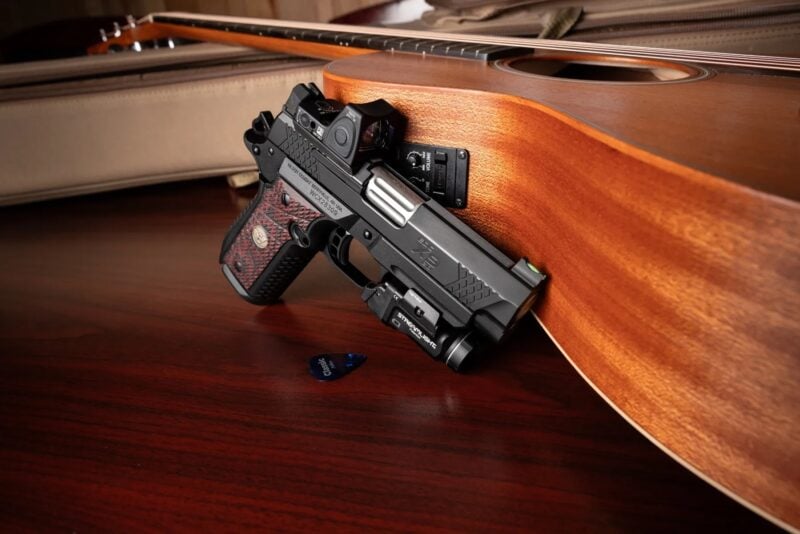Have A Gun...
It’s probably safe to say the number one rule of gunfighting is to have a gun. It’s easy to see in our modern society where that can be problematic. Even in areas where carrying guns — concealed or unconcealed — is permissible, there are still regulations and social mores to be considered. It’s understandable good people often end up as defenseless prey.
What is not so easy to understand is how people let themselves be defenseless prey on our American western frontier of the mid to late 1800s, where going armed had no negative social connotations, and even less regulation.
Nowhere in the history of our nation have settlers been in more danger than they continuously were in Texas for over 50 years — generally speaking, from 1830 to 1880. Thousands of Americans died in that time at the hands of numerous Indian tribes, most notably the Comanche. Many sold their lives dearly, but history is full of instances where the victims knew there were depredations happening all around them yet remained oblivious to their own peril.
Dumb Vs. Smart
Aman named Ezra Sherman decided to take up farming in the western end of Parker County, Texas, and settled there with his wife, Martha, and three children. At that time the locale was suffering some of the worst Indian raids in the state’s history. Mr. Sherman did not even own a firearm. On Nov. 26, 1860 the Comanches struck. All the Sherman family could do was run, but Mrs. Sherman, being 9 months pregnant, couldn’t keep up. Long story short, she died 4 days later of her wounds and horrible mutilations. She was only one of 23 people killed in a 2-day period by that single band of raiders.
Compare this other Texas story. In the 1850s Indians were raiding around a place called the Haby Settlement, so a settler named Jacob Haby chained his horse to his house’s porch where he could keep night watch through the open door. He also kept a newly purchased “six-shooter” in his hand. In the night, the horse became restive which alerted Haby. An Indian was easing alongside the cabin to the open doorway so in preparation Haby cocked his new revolver. The Indian heard the clicks, knew what they meant and skedaddled. No need for shooting.
Consider this one. In June 1874 at the Adobe Walls trading post in the Texas Panhandle, a group of 28 buffalo hunters, skinners, storekeepers, blacksmiths and bartenders, plus one wife, gathered for mutual protection. Several hundred rampaging Comanche, Cheyenne and Kiowa warriors were known to be in the area. The night of June 26/27 was hot, so several of the men slept outside, but they took their sixguns and cartridge belts along. One of them was later to become famous as “Bat” Masterson.
At dawn the Indians charged on horseback and were into the settlement before anyone could respond. The defenders’ salvation was their handguns. The ones sleeping outdoors fought their way into the buildings with them. Then as the Indians were trying to batter down doors with rifle butts, revolvers were fired between chinks in the logs and from broken windows forcing warriors far enough away so the defender’s buffalo rifles could be brought into play. The battle was touch and go for the first 30 minutes, but after that, the issue was never in question. Being armed and with at least a modicum of mental preparation made the difference. Archaeology at the site has proven at least some of those revolvers were Smith & Wesson #3 .44 Americans and .44 Colt Conversions.

In the 1850s, Jacob Haby saved his horse and possibly his life without firing a shot. The clicks of his new “six-shooter” being
cocked scared away an Indian warrior sneaking up on him. At that time, his six-shooter could have ranged from the tiny
.31-caliber Colt Baby Dragoon to a full-size .44 Dragoon.
Even Custer’s Men
It wasn’t only civilians who got into trouble by being unprepared in an area known to contain danger. In the summer of 1873, a portion of the US 7th Cavalry commanded by Lt. Col. George A. Custer escorted surveyors in eastern Montana. They knew hostile Sioux and Cheyenne Indians were shadowing them continually. Yet their regimental veterinary surgeon, John Honsinger, and an accompanying civilian settler named Baliran, wandered only a few hundred yards from the marching column. Both were unarmed despite a plentitude of weapons in the expedition. Indians hiding in the brush killed both men and made their escape before anyone knew what was happening.
Everyone involved in firearms training will say this: “Possession does not equal competency.” But at least at a time and place where going well armed was possible, and even encouraged, some people still ignored it, to the detriment of their lives. Maybe having a gun isn’t a bad idea at times?





